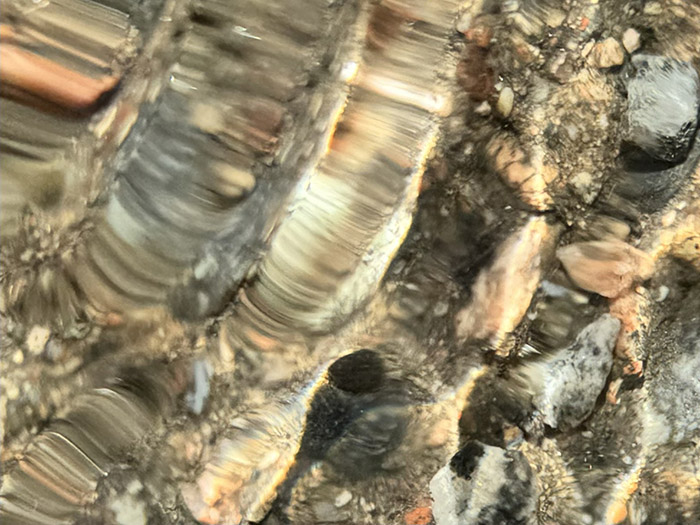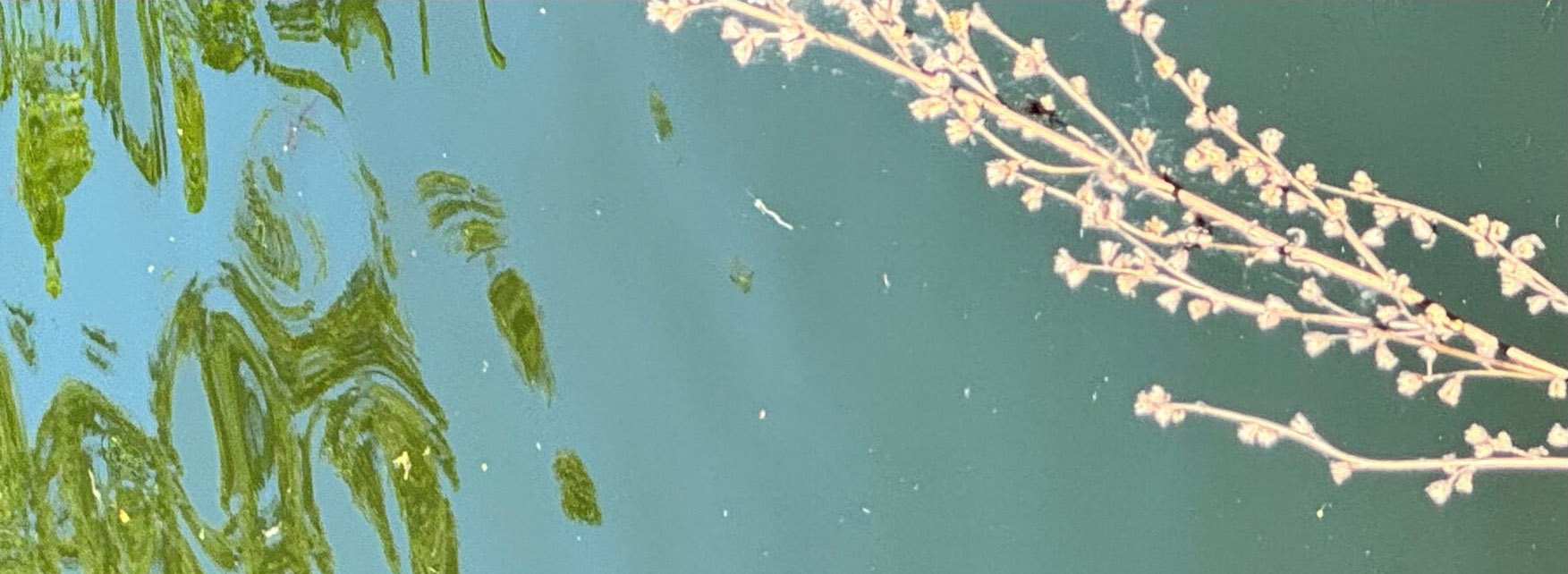Media Atmospheres international symposium
Photo banner: Adhyani Wirajuda
2-3 May 2025

Photo: Adhyani Wirajuda
Media atmospheres are under pressure. There are scientific and metaphorical meanings of atmospheres as related to both climate and infrastructures and emotions and experiences. From the political economic forces applied to media industries, the representation of different climates in film and media, to the feeling of atmospheres surrounding political and cultural engagement, it is timely to question the generation of atmospheres by media technologies and institutions, texts and artefacts, and citizens and audiences.
How can we forge links between established and new theories and methods for media and the environment? We use the concept of ‘media atmospheres’ to promote engagement on this crucial set of topics. For example, media devices, infrastructures and systems impact on atmospheres, including the forces applied to the financing, regulation, production and distribution of media in society and the detrimental impact of media on the climate and environment. How various media create atmospheres is also of significance, from the mood of certain genres in film, TV, podcasts and streaming media, to the political and emotional climate of social media, campaigns and activism.
Venue: Grand Hotel External link, opens in new window. & Gamla Rådhuset
External link, opens in new window. & Gamla Rådhuset External link, opens in new window., Jönköping
External link, opens in new window., Jönköping
Organisers: Annette Hill (HLK, Jönköping University), Hario Priambodho (MKV, Lund University)
This multidisciplinary symposium addresses the role of media in generating various atmospheres, both positive and negative, material and symbolic. We invite international researchers to critically examine the theme of media atmospheres through empirical and theoretical research across media and communications, critical infrastructures and technologies, climate and the environment, culture and society.
Core questions for this symposium include 1) What different kinds of atmospheres are generated in media and communications, culture and society? 2) How do media atmospheres generate power and social (in)equalities? 3) Which methodologies and methods can be applied to critically analyse media atmospheres?
Media Atmospheres Areas
The programme for the symposium across two days includes three keynote panels with invited speakers and open parallel panels. There will be a dedicated website, video and podcasts of keynote panels, and selected papers from the symposium will be edited in an international academic publication. The senior editors at Intellect Press and Routledge will be present, chairing an interactive roundtable on academic publishing for scientific books and journals.
International invited speakers include Julia Brockley (Intellect Press), Simon Dawes (Université de Versailles Saint-Quentin-en-Yvelines, France), Natalie Foster (Routledge), Christine Geraghty (Glasgow University, UK), Joke Hermes (InHolland University, Netherlands), Annette Hill (Jönköping University, Sweden), Peter Lunt (Leicester University, UK), and Dylan Mulvin (LSE, UK), Hario Priambodho (Lund University, Sweden).
- Phenomenology of atmospheres and media, communication and cultural studies;
- Atmospheres and critical infrastructures studies, critical data studies and science and technology studies;
- Atmospheres in audience studies, fan studies, and film and reception studies;
- Atmospheres and eco media studies, environmental communication and sustainable society;
- Creating atmospheres in arts, film, radio, television, social media and web series;
- Atmospheres and organisations, work, and labour relations;
- Political atmospheres in news, documentary, information, disinformation andpolarization, and campaigns;
- Atmospheres in live events, social media, drama, film, radio, podcasting and television studies;
- Atmospheres in mobility, transnational communication and transportation of goods and services, humans and non humans.
Preliminary Programme Media Atmospheres
Friday, 2 May 2025
10am Registration
11.30 Lunch
12.30 Keynote Panel 1 Audience Atmospheres
Peter Lunt, Annette Hill and Hario Priambodho
14.00 Coffee
14.30-16.30 Parallel Panels
16.30 Academic Publishing Roundtable
Chair Simon Dawes, Julia Brockley (Intellect Press) and Natalie Foster (Routledge)
17.30 Dinner (self organized)
Saturday, 3 May 2025
9.00 Keynote Panel 2 Affective Encounters
Christine Geraghty and Simon Dawes
10.00 Coffee
10.30 Parallel Panels
12.30 Lunch
13.00 Parallel Panels
15.00 Coffee
15.30 Keynote Panel 3 Relational Atmospheres
Dylan Mulvin and Joke Hermes
16.30 Media Atmospheres Reflections
Chair Annette Hill
17.00 End of event
18.00 Dinner at Grand Hotel
Please submit an abstract of 300 words in English by January 8 2024 to Hario Priambodho
(hario.priambodho@kom.lu.se) There is a registration fee of 2500 SEK. The fee covers lunches, beverages and snacks over two days, and a grand three course meal at the end of symposium at Grand Hotel.
Invited Speakers for Keynote Panels Media Atmospheres
Julia Brockley (Intellect Press)
Professor Simon Dawes (UVSQ, France)
Natalie Foster (Routledge)
Professor Christine Geraghty (Glasgow University, UK)
Professor Joke Hermes (InHolland University, Netherlands)
Professor Annette Hill (Jönköping University, Sweden)
Professor Peter Lunt (Leicester University, UK)
Dr Dylan Mulvin (London School of Economics, UK)
Hario Priambodho (Lund University, Sweden)
State of the Art Media Atmospheres
The primary research on the theme of media atmospheres follows two major lines of enquiry; one on the environment and critical infrastructure and data studies; and the second on affect, emotions and experiences in phenomenology, architecture and cultural and audience studies.
In terms of research on atmospheres and the environment, there are several studies that focus on the more philosophical meanings of the elements in mediated climates, such as work by Durham Peters (2015), or a critical reassessment of the ideas behind cloud computing and its military origins (Hui 2016). A scientific and cultural analysis of media applied to climate control and weather patterns, including climate change, shows how the mediation of communication on climates is a political arena and both citizens and the earth’s elements are climate controlled in various ways (Furuhata 2022). The critical analysis of ideas and symbolic and material power relations for climactic media are issues that concern this symposium.
The kinds of research in media and environment, including eco media studies, climate communication and sustainable society, provide insights into how atmosphere in its scientific meaning is strongly related to the impact of the media on the earth’s climate. For example, Starosielski’s (2022) work on hot and cold thermal media analyses the cultural politics of thermopower, from the temperature scans at airports to climate wars. Similarly, Ahern’s (2023) ongoing research on climate control and data centres for digital computing highlights how the material conditions of atmospheres surrounding the location of data centres in cold climates is of pressing concern in public understanding of the carbon footprints of digital media, including high energy applications by AI and algorithms. A direct connection between digital carbonization and the atmosphere of the earth is a theme to be addressed in the symposium.
The area of research on atmospheres as connected to architecture and phenomenology follows the work of Gernot Böhme (2017) on felt spaces who argues that atmospheres in urban environments can be understood as people’s experience of immersion in these material and affective spaces. This line of enquiry in architecture has led to a burgeoning new development in architectural spaces for digital media, including a phenomenological and spatial exploration of mediated atmospheres as felt spaces. Most recently, Peter Lunt (2024) has reviewed Böhme’s work and reinterpreted it in light of media events, liveness and participation in audience studies. Lunt brings a phenomenological understanding of felt environments to mediated atmospheres and considers the broader implications of an atmospheric approach for audience research.
There is certainly a need for an atmospheric approach in the study of media engagement. For example, the material conditions for news engagement in regions where there are struggles over the climate of democracy signal how political ownership of news and information flow can choke the freedom of citizens to access news that is reliable and trustworthy. Thus, a toxic climate of fake news and AI generated videos can be detrimental to the experience of citizens and their search for knowledge about national and international events, or crises such as wild fires and environmental disaster (Dahlgren and Hill 2023). To develop the methodologies and methods for researching positive and negative atmospheres for media engagement, and the experience of participating in media debate, culture wars, and conspiracy theories, is of pressing concern for this symposium.
The symposium brings together these parallel areas of enquiry into a broader meaning of media atmospheres as including climate and infrastructures and emotions and experiences, thus bridging two distinct areas of research and promoting multidisciplinary dialogue on cross fertilization of methods and concepts for a deeper understanding of media atmospheres.
References
Ahern, M. (2023) "Climate Control, Modernism, and Mass Production," Discourse: Journal for Theoretical Studies in Media and Culture: Vol. 45: Iss. 1, Article 1.
Böhme, G. (2017) Atmospheric Architectures. London: Bloomsbury Press.
Dahlgren, P and Hill, A. (2023) Media Engagement. London: Routledge.
Durham Peters, J. (2015) The Marvellous Clouds. The University of Chicago Press.
Furuhata, Y. (2022) Climactic Media. Duke University Press.
Hill, A and Lunt, P. (2024) The Routlegde Companion to Media Audiences. London: Routledge.
Hui, T-H. (2016) A Pre-history of the Cloud. MIT Press.
Lunt, P. (2024) The Felt Experience of Atmosphere, in The Routlegde Companion to Media Audiences. London: Routledge.
Roquet, P. (2016) Ambient Media. University of Minnesota Press.
Starosielski, N. (2022) Media Hot and Cold. Duke University Press.
